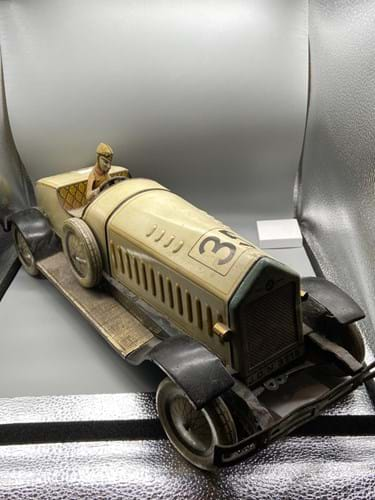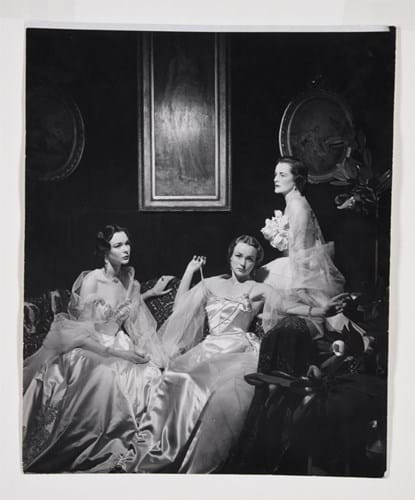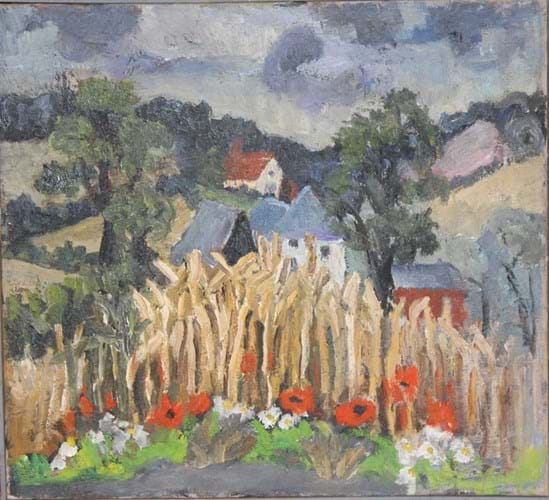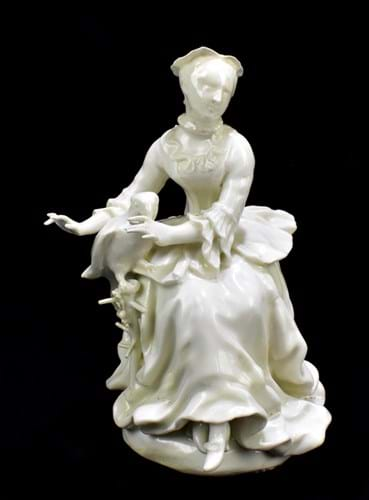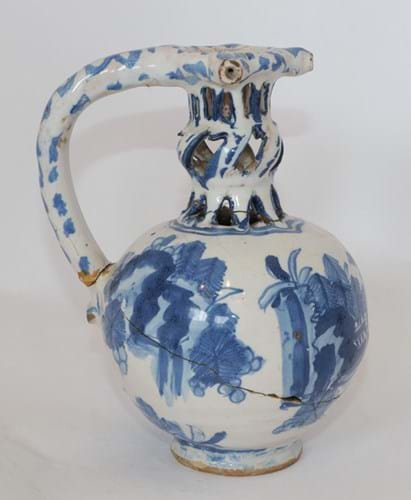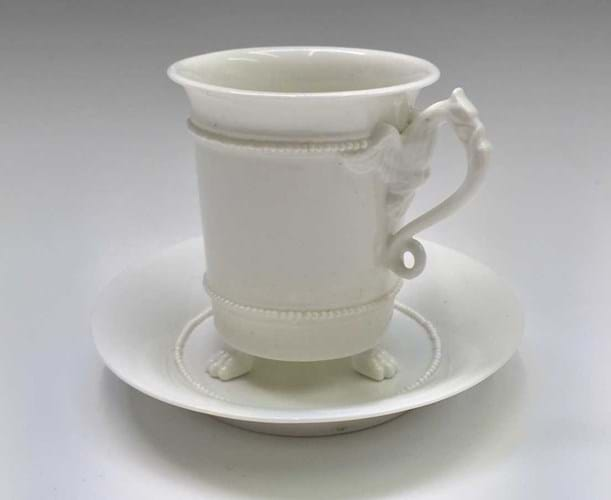1. Johann Distler tinplate racer – £4100
At 20in (50cm) long this stylised tinplate racer and driver was the largest toy car made by the German toymaker Johann Distler. Sporting the numberplate JDN 2715 (for Johann Distler Nuremburg) this version is also the ‘deluxe’ model with working headlamps operated from a battery pack to the base of the chassis. It probably dates from c.1925 by which time the founder had died and the firm was in the hands of partners Brown and Mayer.
It came for sale from a local Fife source at Bowler & Binnie in Dunfermline on March 20 with a guide of just £100-200. For a toy that was in complete and working condition with all of its lithography intact that was certainly on the low side but it had the desired effect of attracting numerous potential bidders.
The hammer price was £4100.
2. Cecil Beaton portrait – £6000
When Cecil Beaton photographed the Wyndham-Quin sisters in 1950, he chose to copy both the setting and poses used 50 years earlier by John Singer Sargent in The Wyndham Sisters. The idea was particularly apt as Sargent’s portrait (exhibited at the Royal Academy in 1900 and now in the Metropolitan Museum of Art) depicted the three daughters of Percy Wyndham – relatives of the Wyndham-Quin family.
The Wyndham-Quinn sisters wore ball gowns by gowns by Hardy Amies and Ronald Paterson. This copy of Beaton’s photograph is signed to the reverse in pencil alongside other notations in different hand.
It was offered at Dreweatts, of Donnington Priory on March 18 with a guide of £400-600 but sold to a buyer via thesaleroom.com at £6000.
3. Lucy Harwood painting – £2700
Lucy Harwood (1893-1972) enrolled at the Slade prior to the start of the First World War but she is best known as student of Cedric Morris at the East Anglican School of Printing and Drawing. She studied there both at Dedham and (after the building burned down) at Benton End in Hadleigh.
Harwood painted her colourful post-impressionist oils of the Suffolk countryside with her left hand: a botched medical operation as a child had left her partially paralysed on her right-hand side.
Alongside the work of her Benton End and Great Bardfield contemporaries, Harwood’s work is increasingly popular at auction. This canvas of Layham, Hadleigh (with a still life study of a vase of flowers verso) was bought by the vendor directly from the artist in the late 1970s for £90. It received a guide of £120-180 at Lacy Scott & Knight in Bury St Edmunds March 19 but showed a rather better return on investment, selling at £2700.
4. Derby dry edge figure – £1900
The sale at Adam Partridge in Macclesfield on March 18-19 included a collection of 18th century English porcelain figures offered in around 30 lots. Many of the pieces were by the Derby factory including this 7in (17cm) high ‘dry edge’ figure c.1752-54 of a lady holding a parrot that pecks at her fingers emblematic of Feeling. As with two-thirds of the early Derby output it is left in the white.
It was part of two series modelled on the theme of the five senses during the tenure of Andrew Planche (1727-1809). The other better known series comprises the celebrated chinoiserie figure groups attributed to the sculptor Agostino Carlini.
Like all the lots in the collection, Feeling was given a modest guide of £100-150 (it had some restoration to the extremities) but sold at £1900.
5. English delft puzzle jug – £15,000
This particular form of English delft puzzle jug, with its distinctive knopped neck, seems to be peculiar to the second half of the 17th century. Michael Archer’s Delftware pictures two examples, one dated 1653 and another with Ming Transitional style decoration dated to c.1670.
Dated English delftware always carries a premium – regardless of condition. This 7.5in (19cm) high jug, offered by Tennants in Leyburn on March 19 has the initials H and IF flanked by the date 1670. Made in either London or in Brislington in the West Country, it is decorated in underglaze blue with chinoiserie figures. Although broken into several pieces and restuck, it was modestly guided at around £1500 and proved of sufficient rarity to bring a hammer price of £15,000
6. Swansea porcelain cup and saucer – £1500
Experiments with porcelain at the Swansea factory began in 1814 with the arrival of William Billingsley and Samuel Walker from the Nantgarw China Works. Production of porcelain ceased after proprietor Lewis W Dillwyn withdrew his support in 1817.
This cabinet cup with griffon moulded handle and paw feet is unmarked but a known Swansea model c.1815. Many are gilded and painted – including those by the noted Swansea and Carmarthen decorator William Pollard (1803-54) – but this example offered by David Lay in Penzance on March 17 was left in the white.
In near perfect condition (there is a tiny fit to the beaded rim cup rim) and estimated at £100-150, it took £1500. Back in 2017 Rogers Jones sold a cup and saucer of this model painted by Pollard with garden fruit and flowers for £10,500.


